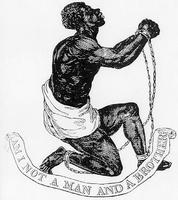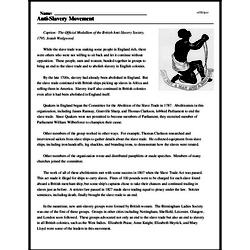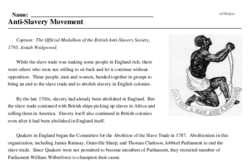Anti-Slavery Movement
Caption: The Official Medallion of the British Anti-Slavery Society, 1795, Josiah Wedgwood.
While the slave trade was making some people in England rich, there were others who were not willing to sit back and let it continue without opposition. These people, men and women, banded together in groups to bring an end to the slave trade and to abolish slavery in English colonies.
By the late 1700s, slavery had already been abolished in England. But the slave trade continued with British ships picking up slaves in Africa and selling them in America. Slavery itself also continued in British colonies even after it had been abolished in England itself.
Quakers in England began the Committee for the Abolition of the Slave Trade in 1787. Abolitionists in this organization, including James Ramsay, Granville Sharp, and Thomas Clarkson, lobbied Parliament to end the slave trade. Since Quakers were not permitted to become members of Parliament, they recruited member of Parliament William Wilberforce to champion their cause.




